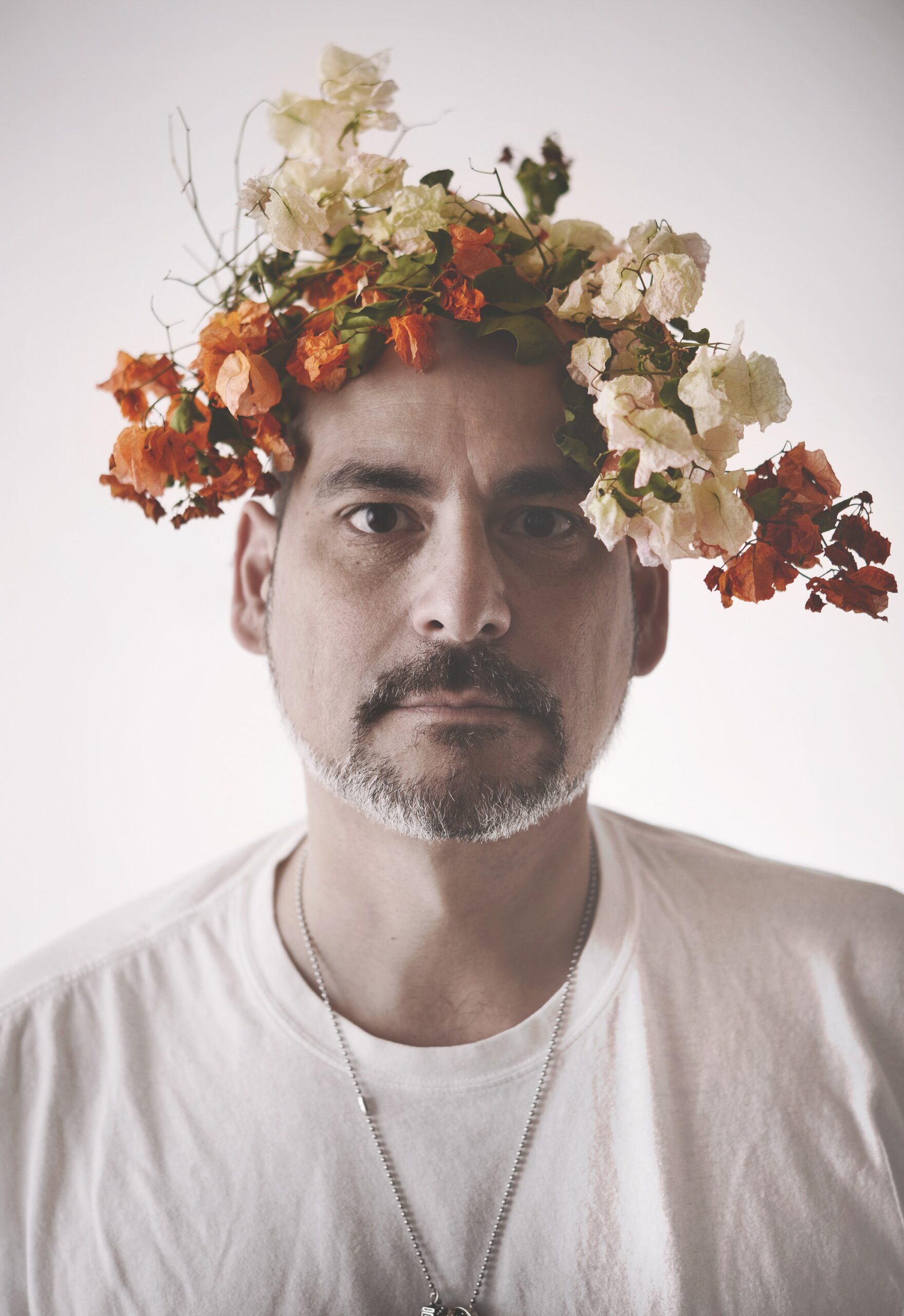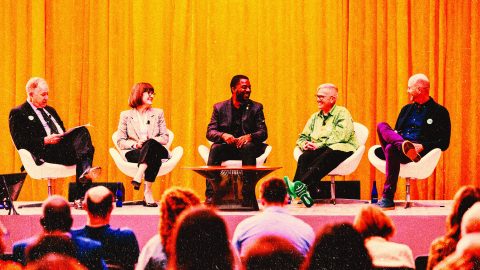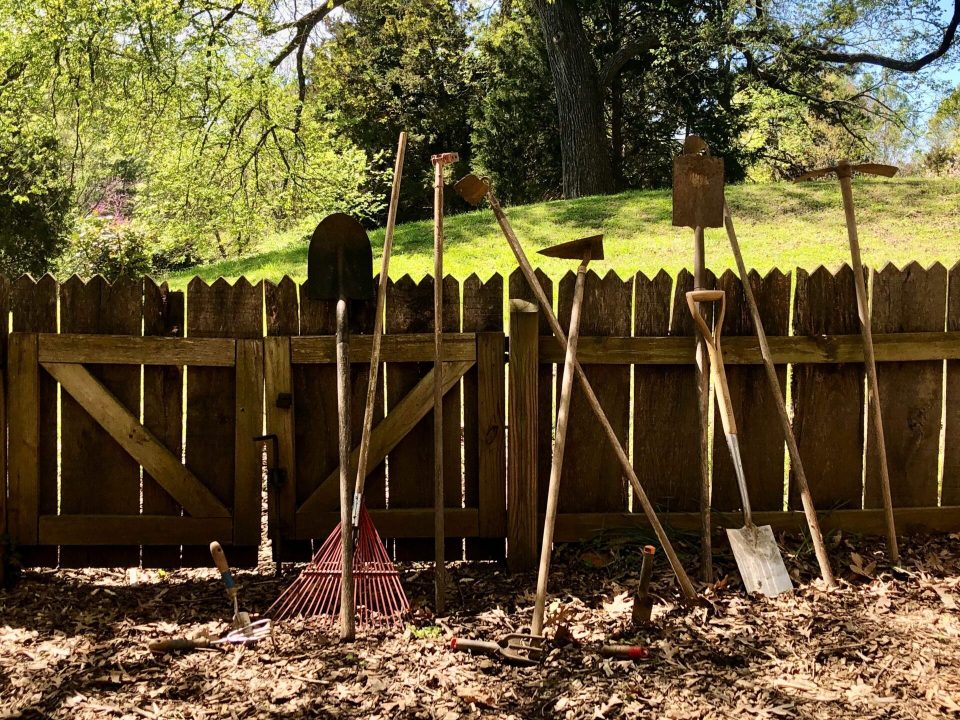
Just as flexible buildings can withstand hurricane-force winds and earthquakes, flexible institutions can withstand monumental challenges like a global pandemic. Because of our four years of re-envisioning at Old Salem Museum & Gardens (OSMG) and The Museum of Early Southern Decorative Arts (MESDA), which I detailed in a previous article on this blog, we were in a strong position to flex rather than break under the pandemic’s pressures and unfortunate effects.
In this follow-up to my last post, I will outline the actions we’ve taken behind the scenes during the pandemic—not only shiny new things like our successful move into TikTok but also workhorse activities that significantly modified our operations to respond to the pandemic and keep an eye on the post-COVID world. My primary purpose in writing this article in such detail is to show how our changes have not only included front-facing community engagement efforts but a deep rethinking of our operations. Putting on a mask and continuing to run the same programs did not seem like the correct path for us—nor does it seem useful beyond the pandemic. Radical re-thinking was needed.
As the pandemic arrived, our collaborative leadership team—a group of twenty-one staff representing all organization divisions, a full spectrum of pay scales, and gender/racial/orientation diversity—began meeting to analyze COVID-19 data and decide how to act on it. At the most fundamental level, this collaborative leadership model has kept our organization functioning efficiently, and the diversity of the group has helped us identify creative and comprehensive solutions. There is power in collaboration.

Although we were flying in fog, we set out a series of strategic points to keep us focused on what mattered.
- The health and safety of our staff was our top priority.
- Data would guide our organizational choices.
- We would be proactive and creative; we would not hibernate and wait for business as usual but do the opposite: listen to our community, expand our engagement, and find new ways to fulfill our mission.
In hindsight, our process seems more orderly and sequential than it was. During the first few months of the pandemic, I kept a wall of sticky notes to the left of my desk and kept adding new notes every time I had a crisis that needed considerable thought and attention. At one point, I had nine crisis situations occurring simultaneously, and the “stress ball” I would place in my fist to flex during difficult virtual meetings burst in my hand (no exaggeration)! I bought another, more capable anxiety-reducing flex ball to take its place. Thankfully, our leadership team had extraordinary support from our board of trustees, executive committee, national advisory board, and MESDA advisory board, particularly our Board Chair Hayes Wauford and Vice-Chair Erika Mielke. This support alone kept us going.

Establishing a Structure to the Pandemic
As uncomfortable as it sounds, we, like everyone, were swimming in chaos and uncertainty. We all needed a life raft, some structure to grab hold of. In one of our leadership team meetings, I presented what I thought would be that life raft. In reality, it was a completely fabricated illusion—we all knew that—but it was more than we had.
Based on my initial research on past pandemics—we are historians, after all!—I outlined the likely phases of the pandemic in a spreadsheet. I estimated the longevity of past pandemics and placed our decision-making needs within that schedule. We didn’t have dates, but we did have an order of events. For me, the ability to stick to a schedule, checking off one phase and moving on to the next imaginary phase, was both gratifying and motivating. As strange as it may seem, naming something formless seemed to help. These are the five phases of our plan:
- Phase 1 – Crisis. Closing the site down and making sure the staff is safe.
- Phase 2 – Adversity. Immediate. Management of the immense organizational obligations of maintaining the historic properties, collections, and landscapes and assisting affected staff with unemployment and benefits.
- Phase 3 – Stability & Planning. Short-term. Data collection, policy creation, and operations projections.
- Phase 4 – Hybrid Operations. Mid-term. Necessary operational changes to accommodate COVID-19 effects while anticipating future changes to operations.
- Phase 5 – Transformative Operations. Long-term. Creation of a sustainable operations model within the financial, physical, and social realities of the pandemic.
In addition to the above phases, we produced a long-term schedule. I told the team that I would keep my eye on a two-year horizon while they focused on the short-term. Subjecting the pandemic to a long-term schedule forced us out of the crisis of the moment so that we could make beneficial long-term choices that would position us for achievable operational goals when we re-opened. Making choices that would be best for the organization in the long-term changed how we looked at the current crisis. Our goal was not to “get back to normal” but rather to build back for a new and better normal. It was within these parameters that our analysis took place. A detailed video of our process can be viewed here:
Worst-Case Scenario
During the initial phase of the pandemic, I asked COO Terry Taylor and Controller Tammy Everhart to produce a “worst-case scenario” budget showing what it would mean to operate at some normal function with almost no attendance revenue. Since we typically operate in the red all year until the fourth-quarter holiday season, when we make enough money to cover the rest of the year, we were interested in what our bottom line would be in December 2020 if we had little-to-no earned income from traditional visitation. This exercise proved extremely valuable, as it set the parameters and established expectations not only for our leadership team but also for our board of directors. My suggestion is not to shy away from the edge of the cliff—instead, define it. By defining it, you maintain control over the uncertainty of the situation.
For context, our (pre-COVID) 2020 approved budget listed:
- $4,436,542 in revenue
- $5,828,783 in expenses (with 137 employees)
- $1,463,668 in endowment income
Essentially breaking even with a $32,972 surplus at the end of the year.
However, the COVID “worst-case scenario” budget illustrated, through December 2020:
- $3,265.272 in lost revenue, without any admissions, school field trips, programs, events, or retail sales
- Development and fundraising estimated at 50 percent loss
- $5,828,783 in total expenses with all normal operations continuing (with 137 employees)
Leaving us with a deficit of $4,365,115 if we did not modify our operations.
OSMG and MESDA maintain a five-million-dollar line of credit, which our “worst-case scenario” deficit would exceed. It was clear that, financially speaking, we had to become proactive in securing the situation. This worst-case estimate became the cornerstone to our analysis and conclusions.
Endowment—Board-Restricted Funds
Having the same questions as many about using endowments to retain staff and pay operations costs, we analyzed ours a bit deeper. Old Salem and MESDA’s endowments consist of some seventy-four individual funds totaling about thirty-eight million dollars. That is a lot of money; however, the majority of these funds (63 percent) have very narrow restrictions on how they can be used and are therefore off-limits for anything other than the donor-stipulated use. In addition to these seventy-four funds, Old Salem and MESDA have thirteen funds with yearly withdrawal amounts controlled by the board of trustees. As part of our “worst-case scenario” planning, we investigated what use of these funds would do to the long-term stewardship of the organization. We determined that using the money then would create an endless spiral of costs demanding more endowment than we had in the bank.
Even if it had been possible to shift endowment funds toward temporary operations, it would have seriously reduced our ability to operate after COVID-19 by constricting the interest on our endowment funds to cover salaries and operations during normal times. We knew we had to find a hybrid operation compromise that would allow us to serve the community, retain as many staff members as possible, and keep our deficit within an acceptable level.
Leadership Team Analysis & Conclusions
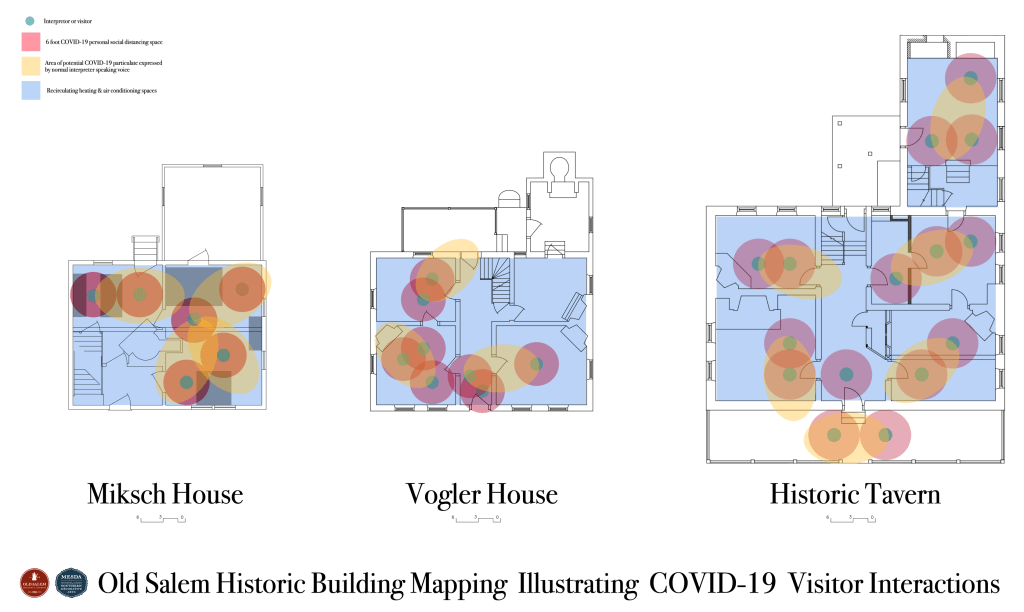
The leadership team, working collaboratively across all divisions, investigated and produced a Hybrid Operations Strategy to get us through 2020. This involved gathering scientific research, meeting in small, focused teams, executing mapping exercises on a handful of our historic buildings, and anticipating potential effects of COVID-19 on our operations through and beyond the pandemic. Once again, we established a conjectural structure for the analysis. We wanted to be able to judge all divisions using the same parameters honestly. Those thematic segments were as follows:
- Safety of the staff
- Unique issues to consider for each division (i.e., assumptions, trends, expectations, the economy, social distancing measures, etc.)
- Prioritizing core operational tasks (such as building and landscape maintenance and collections care)
- Financial factors (with data)
- A tentative schedule & timeline for both internal and public re-opening
Our two-week-long analysis resulted in the following conclusions:
- A second wave of COVID-19 in Fall 2020 was likely, and possibly a third in Spring 2021, based on historical documentation of previous pandemics and current projections. (Fall and spring are high-volume visitation times for OSMG, and without the income from that visitation, it would be hard to justify the expense of operating in a traditional way, especially given our commitment to the health and safety of our staff and visitors.)
- North Carolina school systems would likely discourage or eliminate field trips through the Spring of 2021, as recommended by the CDC guidelines. With staggered class schedules and the continuation of remote learning, teachers would be seeking digital engagements and perhaps small, intimate, in-classroom visits. (Approximately forty-five thousand of sixty-five thousand visitors to Old Salem each year are school groups, and admissions overall makes up 25 percent of our annual revenue.)
- Tourism spending would decline an estimated 20 to 50 percent during and following the pandemic. (45 percent of OSMG and MESDA’s earned revenue comes from retail tourism spending.)
- Due to COVID-19 sanitation, safety, and size limitations, small, enclosed venues would not be suitable for groups. (Most of our interior spaces—interpreted and retail—are small, domestic-sized venues that do not allow for physical distancing protocols.)
- Making our spaces COVID-compliant for visitation would require an estimated fifty to seventy thousand dollars in expenses, a number which would increase if we had to open and close multiple times and undergo sterilization.
- Given estimated COVID-19 effects, if Old Salem and MESDA were to reopen in June 2020 and provide a traditional visitor experience (although this was not possible), we would need to bring in over 1.7 million dollars in earned revenue through December 2020, with an average daily expense of 13,605 dollars. Conjecturally, OSMG and MESDA would have to bring in 716 visitors a day to break even at the end of the year. Not only was this unrealistic, but this visitor number would easily exceed all social distancing requirements.
In response to these and other factors, we decided that:
- OSMG and MESDA‘s Hybrid Operations model would run from July 1, 2020, until at least December 31, 2020.
- Our plan would not include utilizing the historic venues for traditional, intimate, conversational, costumed, interpreted guided experiences.
- Director of Facilities Erik Skarzynski would facilitate the purchase of PPE for the entire organization so that staff could safely return onsite as conditions allowed. He and his crew would also begin tightening up outside boundaries and fences surrounding ticketed buildings, anticipating a greater use of exterior spaces when we initially reopened for on-site visitation.
- We would postpone reopening our in-person retail spaces until Spring 2021. Instead, our retail operations would focus on creating an online retail store that showcases and sells OSMG cookies, Moravian illuminated star lights, and other unique high-demand items.
- The education, collections, and research staff, primarily working from home, would concentrate their energy on fulfilling the mission of Old Salem and MESDA through digital experiences.
- Working in a socially distant way, we would take on long-term collections, maintenance, and preservation projects that would support our educational mission now and prove beneficial later. For example, our Collections Managers Jessie Harris and Jane Sutton, along with Moravian Decorative Arts Curator Johanna Brown, have added photographs and edited the cataloging of more than three thousand objects in our online collection database.
- We would call our Phase 4 period #StudySOUTH and position it as a period of study, research, and experimentation (online and on-site).

#StudySOUTH: Hybrid Phase 4 Operations Plan
#StudySOUTH presented Old Salem and MESDA as open to the public, just in a different way. From June through December 2020, our staff would experiment with special programming online and on-site. Our historic buildings, gardens, research centers, library, and labs would be open by appointment to scholars and researchers interested in working with our collections and research resources. We would brand all of our new activities and create a graphics package so that our efforts would appear unified, not haphazard. We wanted the public perception of our work to be consistent with its quality as well as the strength of our analysis and conclusions.
#StudySOUTH Programmatic Changes
Because we had become so collaborative and efficient, we quickly re-evaluated our activities and focused them in ways that served new and urgent needs. Our changes in practice were not merely temporary tweaks to the established system. Instead, we allowed ourselves the space to deeply reimagine the future of Old Salem and MESDA after the pandemic in ways that could render the organization an entirely new entity. The following are short descriptions of the metamorphosis:

Gardens Serving Community Needs
A good portion of Winston-Salem has been designated as a food desert by the FDA, and the pandemic has made food scarcity in our local community far worse. On March 21, 2020, at our Director of Horticulture Eric Jackson’s suggestion, we began transforming all our educational demonstration gardens into vegetable gardens to support local food banks. This work allowed us to recall our horticulture staff (with COVID precautions). As of this article’s date, we have donated well over three tons of fresh produce to our new community partners Second Harvest Food Bank and HOPE Winston-Salem. These partnerships have proven so successful that we have decided to continue our food bank efforts as a permanent effort at OSMG and MESDA.

Historic Bakeries Feeding Local Families
On April 6, 2020, at the suggestion of our Director of Bakeries, Chad Smith, we switched our historic bakery operation to bake bread for Second Harvest Food Bank, a local organization that feeds families in need. We have been able to recall members of the production bakery staff, and we now donate over 250 loaves of fresh bread to local food banks every week. For the first few weeks, Chad Smith came into the bakery, produced the dough, facilitated the process, baked, and managed the food bank transfers all himself! So far, we have baked well over ten thousand loaves of bread and over seventy-two hundred bags of cookies. This work gave our bakery staff a mission and a runway while we launched online sales of our famous Moravian cookies. (Check them out at OldSalem.org/shop!)

Interpretation & Education Providing for Community Needs of Teachers, Parents, and Students
In the years before the pandemic, we were already working toward restructuring our education division to better serve our community’s contemporary needs. Karen Walter, Director of Learning in Place, saw the need to fast-track these transformations in ways that could better position Old Salem’s educational opportunities during and after the pandemic.
Since traditional costumed in-person interpretation had ended on March 12, we refocused all of our attention and educational staff on creating online opportunities that would support students and teachers in our community. We restructured the division to streamline our new collaborative approach, rewrote job descriptions, formally expanded our interpretation to include Black and Indigenous peoples’ narratives, and created a top-notch and focused educational staff to form the new future-facing Old Salem educational concept. This new organizational approach allowed us to keep a core education team working through the pandemic and engage them in ways that we could not before. We also took the opportunity to re-envision and establish all of these new positions as exempt, full-time, salaried educator positions. This change recognized the professional nature of these positions and allowed us to utilize their efforts from home throughout the pandemic.
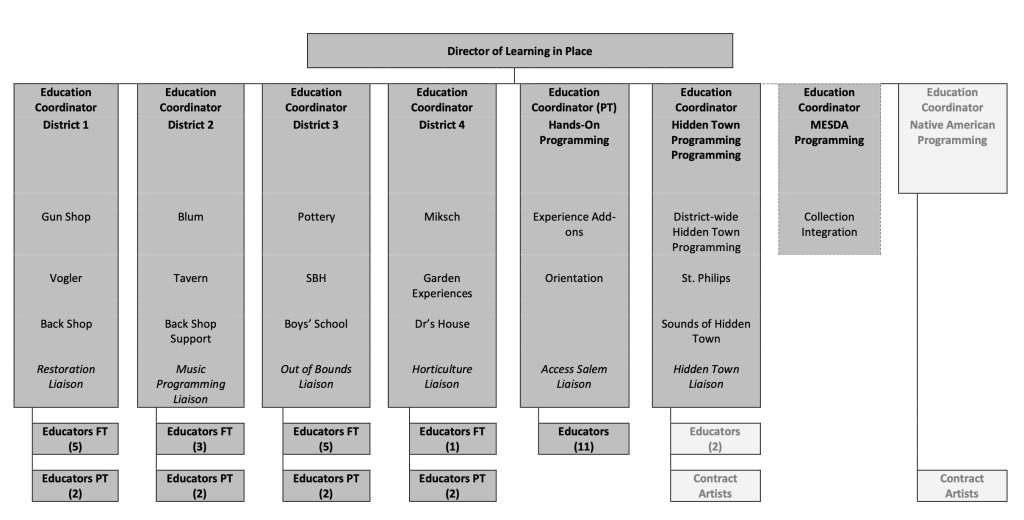
Because supporting teachers, families, and students was especially important to our mission, the very same day we closed to the public, we launched our first new digital classroom, “Learning in Place,” an educational series tied directly to curriculum and teacher needs. To date, these short programs have had over 174 thousand views and over forty-seven hundred reactions, comments, and shares.
Communications, Digital, & Social Media Engagements
In 2017, before the pandemic, we established a comprehensive communications and social media plan with CAPTURE Communications, which centered on humanizing our narratives, making connections to current-day events, countering perceptions of elitism and narrowness in living history and decorative arts historic sites, and being radically experimental. Even though COVID-19 took us out of our regular activities, we not only remained true to these principles but expanded upon them by growing our communications and exploring new platforms like TikTok. The leadership team, as part of the COVID response, asked for me as President & CEO, to increase my public and staff communications as a regular effort. I became much more present while I also conveyed very transparent, and data-driven updates (such as one that has been included at the start of this article). We initiated monthly Town Halls and staff update emails.

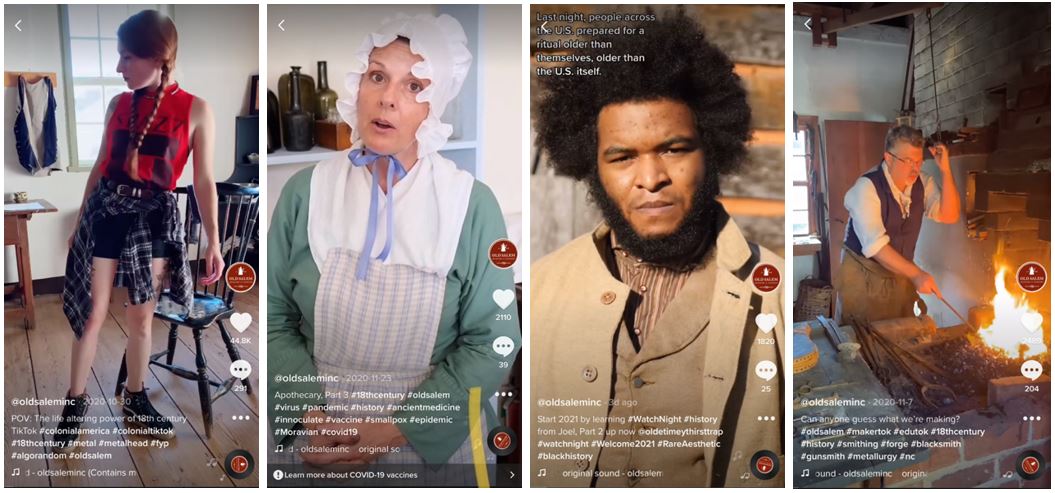
Old Salem’s Big Break into Gen Z’s Favorite Social App, TikTok
History and cultural sites are continually seeking ways to engage new audiences. Often, some of the most elusive groups to reach are younger millennials and zoomers. Following the guidelines of our social media plan to “be experimental,” Director of Community Engagement Samantha Smith and I decided to explore the possibilities of TikTok, a video-sharing app enjoyed by all ages but especially popular among teens and young adults.
Encouraged by the success of our museum colleagues like the Uffizi, the Metropolitan Museum of Art, and Black Country Museum in the United Kingdom, we decided to take a leap and use the platform to share the unique story of the town of Salem and the larger American South—including the stories of enslaved and free Africans and African Americans, Indigenous peoples, and the Moravians—hoping at least a few people would be interested in engaging with us.
On October 29, 2020, Samantha Smith, Director of Community Engagement, uploaded a simple video of Education Coordinator and joiner Ben Masterson working on our reproduction eighteenth-century lathe in the Blum joinery. No commentary, no instruction, no explanation, just a video of Ben turning on the lathe with the caption “Welcome to 18th century TikTok. We hope you stay awhile.”
@oldsalemincWelcome to 18th century TikTok. We hope you stay a while. #woodworking #woodwork #lathe #lathelyfe #joiner #joinery #18thcentury #craftsmanship♬ original sound – Old Salem & MESDA
After a few short hours, the video had reached thousands of views, and our account had gone viral. Later that evening, we posted another video of Ben explaining the science behind how the lathe works, which is still one of our most popular videos, with 1.5 million views, 229 thousand likes, and 1,971 comments.
@oldsalemincYou ask, we deliver @why_does_this_not_work #lathe #lathelyfe #woodworking #18thcentury #oldsalem #camelcity♬ original sound – Old Salem & MESDA
As of today, we have accrued 1.2 million likes and 132,748 followers from all over the world, mainly the United States, Canada, the United Kingdom, and Australia.
Along with accomplishing our objective to be experimental, we began using TikTok as a way to tackle other goals in our plan: presenting our staff in a humanizing way—often through humor, like “museum beef” videos with Black Country Museum—and making direct connections between history and current events, like our video about smallpox inoculations in relation to the COVID vaccine. Using TikTok, we are countering the impression that we are elitist, academic, and narrowly focused on nostalgia and the dominant culture by producing fun, lighthearted, educational content that is accessible to all.
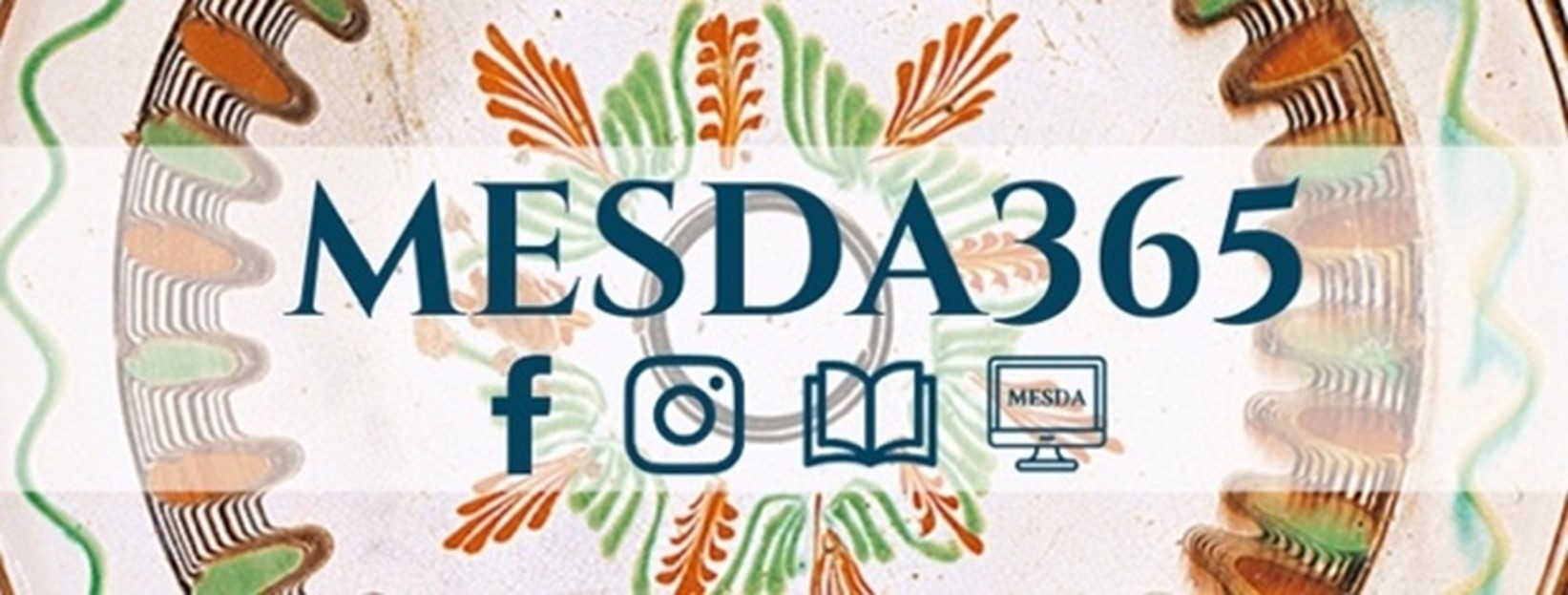
#MESDA365: Use What You Have, in New Ways
Within days of closing to the public, we knew it would be important to communicate what we were doing to pursue our mission, even as we were—like everyone—trying to understand what the pandemic would really mean for us and our operations in the long term. We were fortunate to have made significant investments in online access to our collections and research resources during the previous decade. Under Director of MESDA Research Gary Albert’s leadership, in 2012, MESDA’s peer-reviewed Journal of Early Southern Decorative Arts became a digital product, and in 2015 our collection and major research databases also became available online. We also had a stash of high-quality “favorite object” videos from a 2017 campaign. Under Director of MESDA Engagement Catherine Carlisle’s leadership, these existing digital assets became the foundation for a weekly newsletter and social media campaign we called #MESDA365. Though this content was not new to us, it turned out that it was “new” to a surprising number of our audience members. (It was amazing how many reached out during the early days of the pandemic to thank us for digitizing these resources so quickly. We had to sheepishly tell them that the Journal, the research databases, and the collection had all been available for the past five years!) Mining and tweaking our existing assets gave our team important breathing space while also communicating to the public that we were still hard at work but in new ways.

#HistoryNerdAlerts! Speaking to Current (and at Times Controversial) Events
We first started History Nerd Alerts! in September 2018 during Hurricane Florence, and it has since become our primary means of communicating the overlap between history and current affairs. We expanded this concept in March 2020 to address COVID-19 issues. From our first COVID-related #HistoryNerdAlert post on March 11, we have been continuously, almost daily, making strong, at times difficult and controversial, connections between what we as a community are experiencing today and what the town of Salem was experiencing during the early period of settlement. Johanna Brown, Curator of the Old Salem Collection, has expanded and intensified this communication tool to address not only the COVID pandemic but also the Black Lives Matter social justice movement and the US election. These sometimes-uncomfortable connections make it clear that Old Salem and MESDA are not shying away from difficult and controversial issues. To date, these posts have over 410 thousand unique views and over 13,600 reactions, comments, and shares.

Online Engagements of Various Types and Concepts
Like most organizations, our public programming calendar was upended by the pandemic. This was especially true for our Museum of Early Southern Decorative Arts, whose symposiums are often many years in the making. Early on, we decided that we would not simply convert the existing programs on our calendar into online events. Instead, we would focus on creating programs that took advantage of the new meeting technologies we were all learning to use, instead of treating them as a painful and forced adaptation.
As a part of the COVID-19 program planning, we established several new experiments to engage our public as part of #StudySOUTH. Salem Presents, managed by Director of MESDA Research Gary Albert, was a series of online scholarly conversations about current issues in relation to our collections and mission; MESDA Summer Scholar Series, managed by Chief Curator Daniel Ackermann and Director of MESDA Engagement Catherine Carlisle, was an eight-part classroom-style experience dedicated to understanding Southern Decorative Arts.
Our experiences during the summer led to a fall series called THINGS: A Global Conversation, an online program that features curators, makers, and other experts from around the world in conversation with people and objects from the Old Salem and MESDA collection. Created and managed by Daniel Ackermann, Chief Curator, in addition to being a live program, THINGS is also our very first foray into podcasting!
We also recognized that while we were closed for traditional walk-in interpretation, the Old Salem neighborhood continued to be an important outdoor space for our community. And so Samantha Smith, Director of Community Engagement and Digital Learning, created Salem Pathways, an exterior, self-guided, “choose your own adventure” experience highlighting seven historical figures from Salem’s past, many of whom we have never interpreted before.
We experimented with several different financial models for these programs, including a “suggested donation—pay what you wish” model and a more traditional fee-based model. We determined that both models had their advantages. What was most remarkable is that our online programs had far higher profit margins than our pre-COVID programming, as well as healthy attendance numbers.
Retail Responses
For decades, Old Salem and MESDA had operated a very robust online store, though it was not as profitable as it may have appeared, so we ended it in 2017 to reassess how we were doing business. COVID jumpstarted our re-entry into the online marketplace. In about one month, thanks to Director of Retail Pat Albert and Director of Information and Technology Gary Roher’s hard work, we went from nothing to a fully operational online e-commerce site. As of the end of December 2020, we managed to earn more considerable net revenue from our solitary online store than we were able to do with the five brick-and-mortar retail locations we had before the pandemic! Between June 13 and December 31, 2020, we had gross sales of 95,548 dollars and net sales of 52,551 dollars. This result is a 45 percent increase over 2019’s net for five retail locations.
COVID-19 forced us to rethink a business model that was not fully working for us. Now the future of retail is at the center of our discussions, as we consider it to be part of the visitor experience while also generating a profit and serving our larger mission. COVID has given us a clue to the future earned revenue potential for our retail operations.
Equity Initiative: Temporary Layoffs, Permanent Layoffs, and Eventual Recalls
Although it’s difficult, I feel compelled to address the most unfortunate effect of our COVID-19 responses. On June 18, 2020, after our initial data analysis, the leadership team decided to lay off thirty-three retail and visitor center colleagues temporarily. Two were exempt employees, and thirty-one were a combination of full-time and part-time hourly employees. Fifteen percent were Black, Indigenous, or other people of color.
On July 15, 2020, we conducted a second round of layoffs for thirty-seven staff members we did not have work for, either on-site or remotely. (US government labor laws are very clear about approved remote work for non-exempt employees.) These were all hourly staff (fourteen full-time, twenty-three part-time), and 8 percent were BIPOC.
Eventually, due to the extensive and unavoidable changes to our operations model, we had to permanently lay off all of the seventy staff members referenced above. Not only did we have no foreseeable reopening date, but we also needed to allow these individuals to explore other options for health care, as we kept them on staff until they could no longer be covered under our company-sponsored health plan.
Because of the financial tightening and organizational restructuring of previous years, we were able to provide full paychecks through April 15 and pay the health benefits for those who were temporarily laid off into the summer. At the same time, we worked with the local community college to create and fund a new career training program and added additional mental health counseling for all employees (laid off and employed) and their families. Also, partially due to a 665-thousand-dollar PPP loan from the Federal CARES Act, we were able to retain all of our twenty-one salaried exempt leadership team employees and recall most of the hourly staff in our horticulture, bakery, and maintenance departments after the initial closure on March 15. Currently, we have fifty-one staff members working in some capacity of exempt, hourly, and part-time.
Though Old Salem did have to lay off seventy hourly team members (11.42 percent BIPOC and 88.57 percent non-BIPOC), our equity initiative (as described in the previous post) served as the guide for these considerations.
COVID-19 Policy and Benefit Changes
Recognizing the increased workload and the need to support our staff through the stress of the pandemic, we instituted a long list of new organizational policies to address unique issues with which we suddenly found ourselves dealing. These are the COVID-19 additional benefits we instituted:
- COVID Self-Care Day with Pay – This policy allows staff to take one eight-hour day per pay period to reset, relax, and reflect. This policy’s term date will be evaluated monthly during the pandemic and has currently been extended through February 2021.
- Employee Assistance Program – This new, work-based program offers free and confidential assessments, short-term counseling, referrals, and follow-up services to current and former employees (and families) who have personal and/or work-related challenges.
- Job Training Program – The leadership team worked with our local community college, Forsyth Technical Community College, to craft a unique job training program for permanently laid-off employees. This constellation of benefits includes:
-
- Job placement services
- New career training courses to be covered by Old Salem at one hundred dollars per years of service for the full-time staff laid off, a potential expense of twenty-two thousand dollars to the organization if fully utilized
- Community resources assistance
- LinkedIn learning opportunities
Development and Stewardship Efforts

Our development efforts, headed by Michelle Cook, Senior Director of Development, were also in a period of re-envisioning before the COVID-19 pandemic. In 2019 the Office of Development adopted a new strategic focus that moved Old Salem’s resource development efforts away from large, event-driven fundraising to seeking unrestricted contributions designed to fund ongoing operations and core initiatives. At the end of 2019, development revenue was up 19.4 percent over 2018, driven in large part by several six-figure corporate and government grants, many five-figure multi-year grants, and new and increased major gifts from individual supporters.
As the pandemic’s effects took hold, development and finance met to assess the potential impact on fundraising. The “worst-case scenario” estimated a 50 percent decrease in 2020 approved fundraising budgeted revenue. Again, we chose to be proactive and aggressively seek investments to fund operations and core initiatives—now in the COVID-19 environment. We quickly recalled the furloughed development team members and set about our fundraising and engagement efforts:
- Grant Writing – We focused on securing COVID-specific funding to support our core initiatives, receiving funding for virtual education programming, our digital learning lab, growing vegetables and baking bread for our neighbors in need, and our Salem Pathways project. We secured new funding in excess of two hundred thousand dollars.
- Engaging Current Funding Partners – Working in tandem with the office of the president, development worked to provide our funding partners with regular updates. As a result, two corporate partners renewed their funding, providing an additional seventy-five thousand dollars in unrestricted support.
- Outreach to Community Leaders – Working again with the office of the president, we shared email and video updates with our mayor, city council, county commissioners, and other government leaders. We budgeted for a decrease in city and county appropriations but were held whole with almost three hundred thousand dollars in funding.
- Donor Stewardship – The office of development engaged all current staff to contact donors and friends personally. Donors were either called or emailed to check-in—not to ask for money—and the response was overwhelmingly positive.
- Securing New Donors – As a result of enhanced social media and publicity associated with our virtual educational programming and community outreach through the Victory Gardens and bread-baking, we secured several new business partners—all providing unrestricted funding in support of our core initiatives.
Central to this success was our ability to engage our constituents virtually. Under the leadership of Catherine Carlisle, Director of MESDA Engagement, and with support from our communications, digital, and social media colleagues, we mounted Historic Summer, a highly successful fundraising campaign. Historic Summer was a week-long online campaign to raise unrestricted funds to support our core initiatives while also spreading the word about Old Salem as a community resource. We set a one-hundred-thousand-dollar goal and raised over 109 thousand!
At the end of November, fundraising revenue was down 34 percent—significantly less than the 50 percent anticipated shortfall.
Postscript: COVID-19 Responses
The organizational re-envisioning and our embrace of experimentation have been the very things that have helped Old Salem and MESDA to manage the COVID-19 pandemic. On the day Old Salem Museums & Gardens closed to the public, we were already a considerably smaller, nimbler, more efficient, and more mission-focused organization, with 54 percent fewer exempt staff and 32 percent fewer non-exempt staff than in 2008. We had already cut back on our reliance on unsustainable endowment draws and dramatically reduced our line of credit. Had the COVID-19 crisis hit ten years ago, we would not have had the team or the runway to make thoughtful and strategic decisions. We would have been forced to make far more drastic and less thoughtful choices, and I do not believe we would have survived. Though Old Salem did have to make the difficult decision to lay off seventy hourly team members, our financial tightening and organizational restructuring of previous years enabled us to pay full paychecks through April 15, 2020, continue providing health benefits into the summer months, pay for career development and training, and offer mental health counseling. We were also able to retain all salaried exempt employees and recall a number of hourly staff.
I am certain that these responses were made possible because of a tighter, more collaborative, empathetic leadership team that is comfortable with change, experimentation, and transformation. The organization is now much more aware of and sensitive to community needs and, because of our organizational restructuring, this perspective has now become a part of our organizational DNA. The experimentations that have been outlined in this article are now firmly a part of what OSMG and MESDA is. When COVID-19 recedes, and we can again greet our visitors in person, I am solidly sure that we will be able to greet them with engaging visitor experiences made better by the pandemic experiments we are piloting. We will be “open, just in a different way.”
